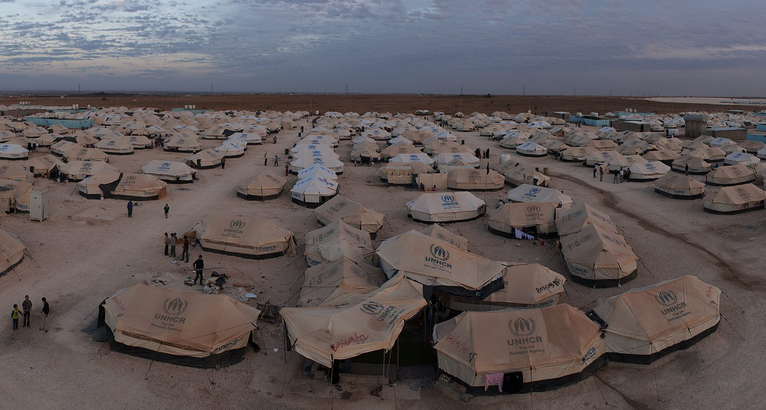Climate and Syria: did the media get it right?

Syria, climate change and the media
During 2015 the media started connecting climate change with the conflict in Syria and subsequent refugee movements across Europe. Many reports were in direct response to new research making this connection. Other reports mentioned this research while examining other major events such as the drownings in the Mediterranean, the refugee camp in Calais and the terrorist attacks in November 2015. But did those media reports accurately represent the research they referenced?
Some elements of media reporting accurately represented the research, especially when coverage focused specifically on events leading up to the Syrian uprising in 2011. Other media reporting fundamentally misunderstood the link between climate change and the early moments of the uprising in Syria. Many media reports argued that climate driven migration into cities created violence between migrants and existing residents that descended into wider conflict. The media reporting tended (wrongly) to present migrants and refugees as a threat to Europe and a source of chaos and violence within Syria. In general, media reports ignored research pointing towards cooperation between migrants and residents in protests against the Syrian regime. Further, in response to the situation in Syria many media reports also speculated about future human movement in response to climate change. But many of these predictions fundamentally misunderstood the way climate change could re-shape patterns of migration in the future.
This interactive online report (including interactive maps, podcasts, video and infographics) explores how the media made and reported a connection between climate change and the conflict in Syria, and asks did those media reports accurately represent the research they referenced?
Key sections of the detailed report are provided below. To read/experience the full report click here.
What the media actually said about Syria and climate change
A common media narrative has emerged linking climate change with the conflict in Syria. Across a number of media stories it is possible to trace a storyline. Media reports vary in their conclusions and emphasis, but several key elements are the same. The purpose of this section is to look at what the media claimed. In the next section we’ll look at how these claims stack up against the available evidence.
Two key points form the basis of most reporting linking climate change to the conflict in Syria, and its consequences.
First, that climate change played a role in causing and prolonging the drought in Syria between 2006 and 2009. The explanation offered by the New York Times was typical of how many outlets expressed this connection: “…extreme drought in Syria between 2006 and 2009 was most likely due to climate change, and that the drought was a factor in the violent uprising that began there in 2011”.
Second, that this drought destroyed rural livelihood and forced people to move from the countryside into Syrian cities. For example, National Geographic explained that this drought “…drove Syrian farmers to abandon their crops and flock to cities, helping trigger a civil war…”
However many outlets explained only vaguely how displacement into cities might lead to conflict. For example the Daily Mail simply argued “[The drought] led to an influx of people into cities causing rising poverty and unrest”. The New York Times said the migration added to “social stresses” although did not elaborate further.
Other news reports made the case that the rural to urban migration swelled the ranks of aggrieved citizens in cities. The increased numbers and mixing of people from across Syrian society gave the early demonstrations against the regime both confidence and increased numbers. Rather than displacees and existing residents fighting each other, this narrative argues they united around attempts to overthrow the Assad regime.
Did the media get it right?
In their paper “Climate change in the Fertile Crescent and implications of the recent Syrian drought” Kelley et al. (2015) argued for a strong connection between climate change and drought. The majority of the paper is spent unpacking the relationship between climate change and drought, and specifically between climate change and drought in the Fertile Crescent. Most media reporting accurately reflects this.
Kelley and his colleagues then argue that the drought eroded rural livelihoods. This caused many Syrian citizens to leave the countryside and move into cities hoping to find alternative employment. Again, the media reporting reflects what the paper argues. The media reporting also broadly reflects other evidence exploring the relationship between climate change and human movement in Syria and the Middle East more broadly. Further, the media reporting and the Kelley paper were also broadly consistent with research exploring the impacts of drought on migration and displacement across the world. Specifically, there is strong evidence linking climate change impacts such as droughtwith patterns of rural to urban migration.
When journalists and commentators responded to the situation in Syria and new academic research, they did so with mixed levels of accuracy. When reporting the conclusions of specific scientific papers, their commentary broadly reflected the scientists’ conclusions. However when they began examining why and how an influx of people into Syria’s cities might have played a role in the uprising, their conclusions were not well supported by existing evidence in the academic literature. In fact it could be argued that most media reporting and commentary examined in this paper reached the opposite conclusions than those supported by the literature. The narrative chosen by the media often represented refugees and migrants as a source of chaos and violence, when in fact there is little evidence to support this.
While reporting on the situation in Syria and the movement of people into Europe many journalists and commentators also included predictions about future episodes of climate driven human movement. These predictions about the kind of movement that might happen are not well supported by existing evidence.
(0) Comments
There is no content